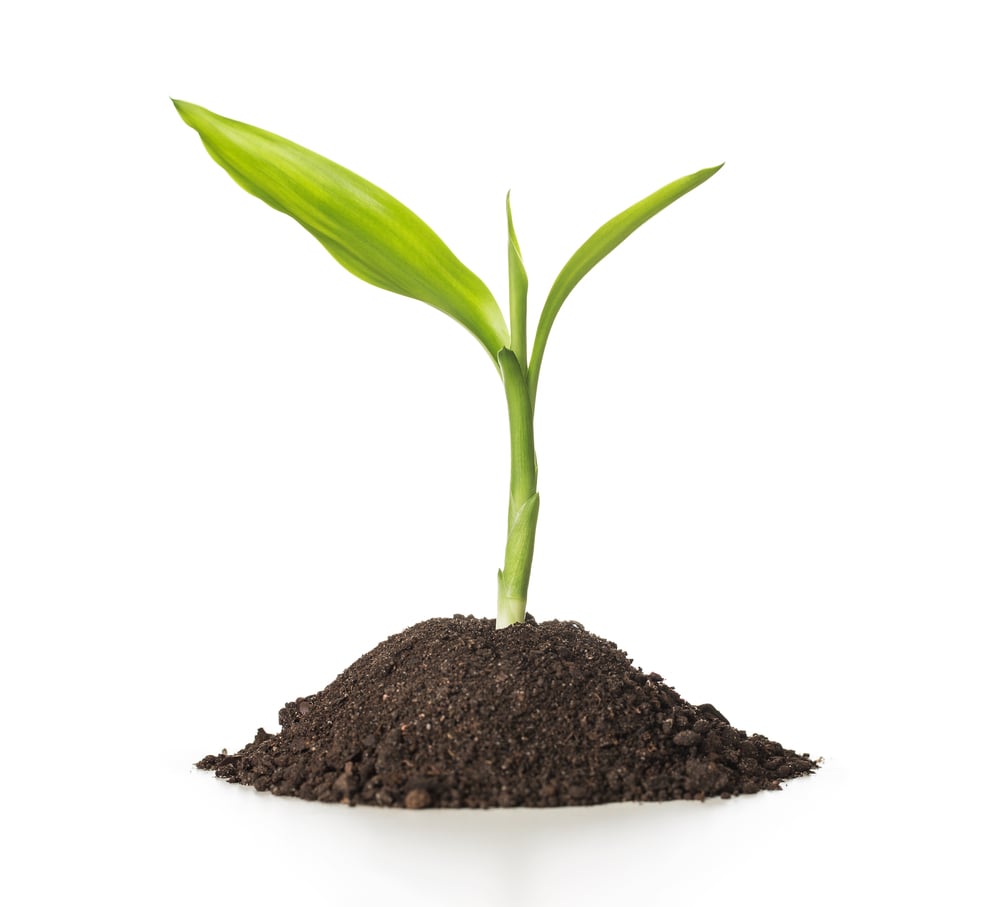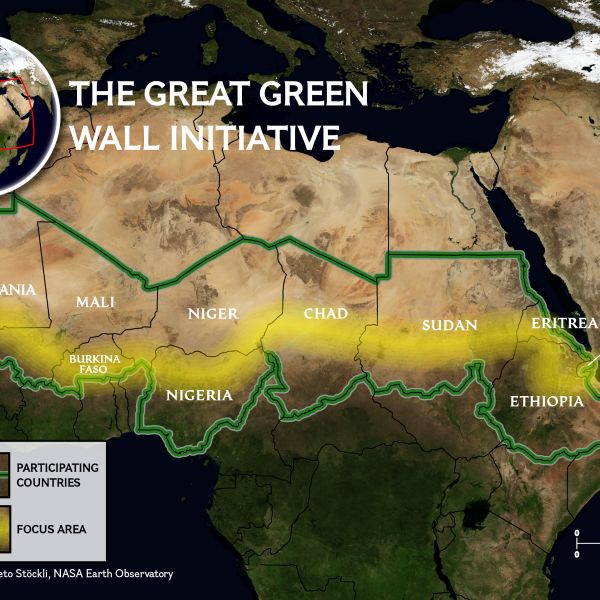In Africa, scientists are hard at work restoring land once rich with biodiversity and vegetation. Eleven countries in the Sahel-Sahara region—Djibouti, Eritrea, Ethiopia, Sudan, Chad, Niger, Nigeria, Mali, Burkina Faso, Mauritania, and Senegal—have joined to combat land degradation and restore native plant life to the landscape.
In recent years, northern Africa has seen the quality of arable land decline significantly due to climate change and poor land management. Uniting under the banner of the “Great Green Wall” initiative, national and regional leaders hope to reverse this trend. The bulk of the work on the ground was originally slated to be concentrated along a stretch of land from Djibouti, Djibouti, in the east to Dakar, Senegal, in the west—an expanse 15 kilometers (nine miles) wide and 7,775 kilometers (4,831 miles) long. The project has since expanded to include countries in both northern and western Africa.
Land degradation typically stems from both human-related and natural factors; overfarming, overgrazing, climate change, and extreme weather are the most common causes. Beyond affecting land and the natural environment, land degradation poses serious threats to agricultural productivity, food security, and quality of life. Nowhere is this issue more urgent than in sub-Saharan Africa, where an estimated 500 million people live on land undergoing desertification, the most extreme form of land degradation.
Jean-Marc Sinnassamy is a senior environmental specialist with the Global Environment Facility (GEF). He helps manage a program developed under the Great Green Wall initiative with countries in the Sahel and West Africa. The GEF has been with the initiative since the beginning, helping to convene country leaders at the headquarters of the United Nations Convention to Combat Desertification in Bonn, Germany, in February 2011. The World Bank and other organizations focused on global development and the environment provide financial and technical support.
For Sinnassamy, the partnership represents a unique opportunity to work across the region with a solid political base.
“Here, we saw political leaders, heads of state, ministers in different countries wanting to work on common environmental issues and wanting to tackle land degradation issues together,” he says. “For us, this is a political blessing. We have to respond to this demand, and we have to capitalize on that.”
Integrated Landscape Approach
Beyond the project’s strong political foundation, its carefully crafted approach brings environmental benefits both locally and globally. The initiative uses an “integrated landscape approach” that allows each country to address land degradation, climate change adaptation and mitigation, biodiversity, and forestry within its local context.
“In this case, working to combat land degradation is the best way to address both very local issues and improve the global environment,” Sinnassamy says. “We are working with the land, which is the basis of livelihood in these communities. We are working with people to improve soil quality, which improves crop yield and in turn agricultural production and the overall quality of life in the community. These very local benefits are also a way to generate global benefits for water, land, and nature.”
In the end, Sinnassamy hopes the region as a whole will be composed of a “mosaic of landscapes” that increases biodiversity and maintains native flora as part of agricultural land. Each participating country has its own individual goals, which include reducing erosion, diversifying income, increasing crop yield, and improving soil fertility.
While trees and forests are only part of the focus of the Great Green Wall initiative, many in the media have cast the project as solely a tree-planting project and an attempt to halt the southward expansion of the Sahara Desert.
Sinnassamy is quick to point out two faults in this perception. The first is that the Great Green Wall initiative is much more nuanced than simply planting a belt of trees across the continent.
“Behind the name or the brand ‘Great Green Wall,’ different people see different things. Some people saw just a stripe of trees from east to west, but that has never been our vision,” he says. “In Niger, Mali, and Burkina Faso . . . natural regeneration managed by farmers has yielded great results. We want to replicate and scale up these achievements across the region. It’s very possible to restore trees to a landscape and to restore agroforestry practices without planting any trees. This is also a sustainable way of regenerating agroforestry and parkland.”
The second misperception Sinnassamy points to is that the Sahara Desert is not, in fact, expanding.
“We are not fighting the desert,” he says. “In the majority of the areas we are working in these 11 countries, the desert is not advancing. The [Sahara] Desert is a very stable ecosystem. Of course, there are some areas on the margins—for instance in Senegal, Mauritania, and Nigeria—where there are some sand movements. But from a geographic perspective, over time the desert has been relatively stable in this area.”
What Will It Take to ‘Build the Wall?’
Having spent the better part of a year planning, strategizing, and building partnerships with agencies on the ground, the Great Green Wall initiative is beginning to report positive early results. The project’s $2 billion budget, stemming largely from World Bank co-financing and partnerships fostered by the African Union, ensures participating countries will have the means to see the project through to the end.
Examples of success include more than 50,000 acres of trees planted in Senegal. Most of these are the acacia species Senegalia senegal, which has economic value for the commodity it produces, gum arabic. (Gum arabic is primarily used as a food additive.) A small portion of the trees are also fruit-bearing, which, when mature, will help combat the high levels of malnutrition in the country’s rural interior.
Even more dramatic is the project’s potential social impact. The BBC reports that the improvements in land quality and economic opportunity in Mali may help curb terrorism in the country, where famine and poverty have exacerbated a spike in political and religious extremism.


